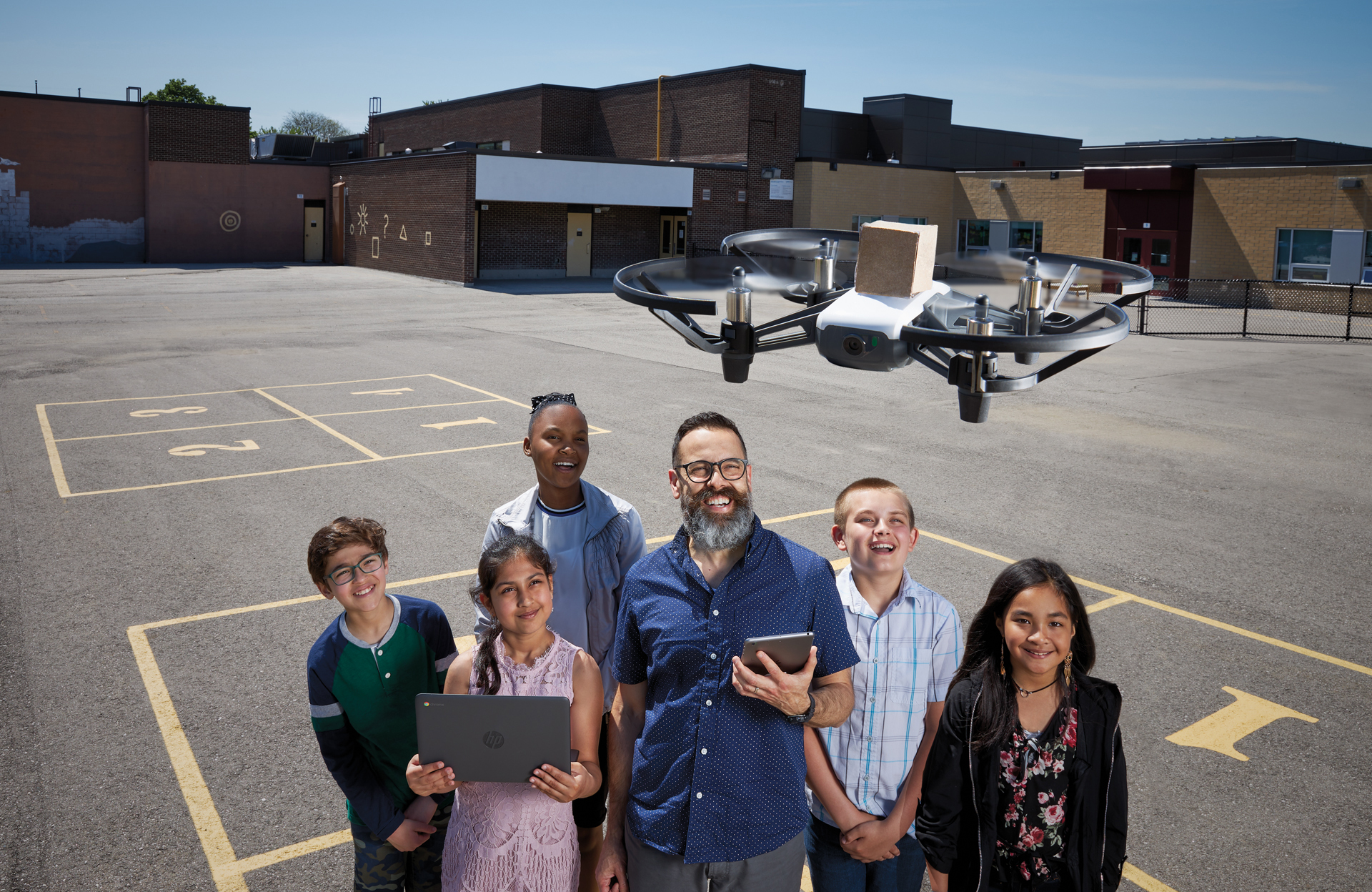Share this page
Grade 5s learn to program drones, practising teamwork and building skills as they fly.
By Stefan Dubowski
Photo: Matthew Liteplo

THE CHALLENGE: Help students strengthen links between core subjects like math and skills like critical thinking, problem-solving and teamwork.
THE SOLUTION: Have students compete in teams to program a drone to deliver packages.
LESSONS LEARNED: Antonio Saccucci, OCT, wanted to combine math with teamwork, critical thinking and other skills for the Grade 5s at Munden Park Public School in Mississauga, Ont. So building on news that online retailer Amazon would use drones in the near future to deliver packages, this media literacy teacher devised an activity in which students would program drones to take tiny boxes from one end of the school’s learning commons and deliver them to a landing area.
First, Saccucci mapped the room and designated takeoff and landing points. Then he had students work in teams of three to draw flight plans, using pencils and grid paper, with each grid square representing a square metre. Students then turned their plans into instructions using iPad Minis, Chromebooks and DroneBlocks, a drone-programming app for mobile devices.
Saccucci reviewed the plans to make sure there were no critical errors.
Then they flew! The teams took turns linking their devices to the school’s Tello drones — small (about 12-centimetre-long) flyers, to which Saccucci had affixed a miniature Amazon package for verisimilitude.
OBSERVATIONS: Not every team succeeded at first as they discovered problems with their plans or coding. But they fixed the errors and tried again. Although competing as teams, they encouraged one another. “I think they felt it was something they were doing as an entire class,” Saccucci says. “So they took it upon themselves to cheer each other on.”
He believes they developed their sense of teamwork and perseverance when faced with problems, while fortifying their measurement skills. And they got to use technology they might not have access to outside of school.
As a teacher, Saccucci learned it’s important to link activities like this to what’s happening in the real world. At first, he wasn’t sure students would get the connection between the lesson and Amazon’s drone-delivery idea. But they did. “They’re more in tune with what’s going on in society than you might think. So try to keep it relevant.”
HELPFUL HINTS: If you’re considering new technology for your classroom, don’t go it alone. Get your students to test it, too. That way, when you go to implement it, your students may be more likely to embrace it. If considering using a heavier drone, familiarize yourself with Transport Canada’s new rules for drones that weigh between 250 grams and 25 kilograms.
The College’s professional advisory Use of Electronic Communication and Social Media — Updated guides members’ professional judgment in the use of technology.